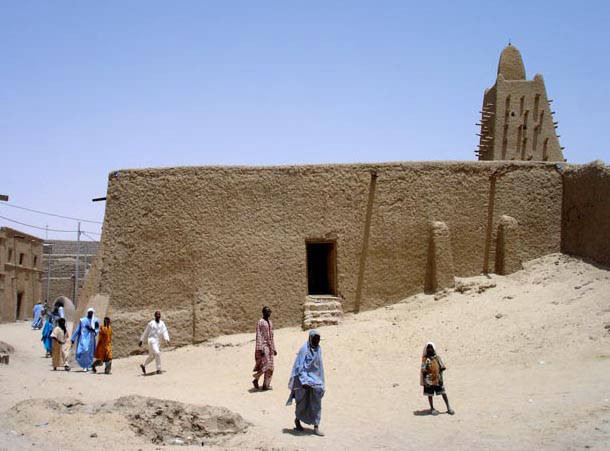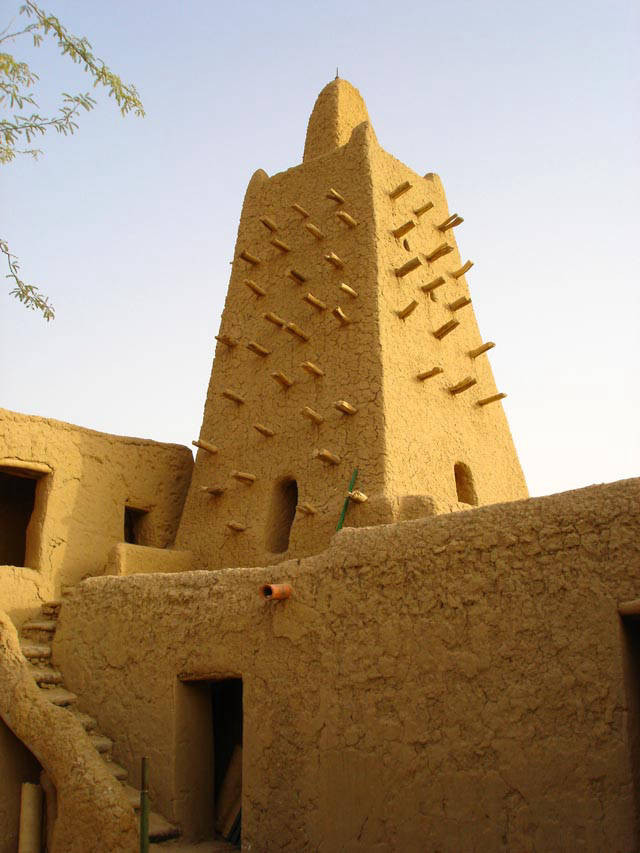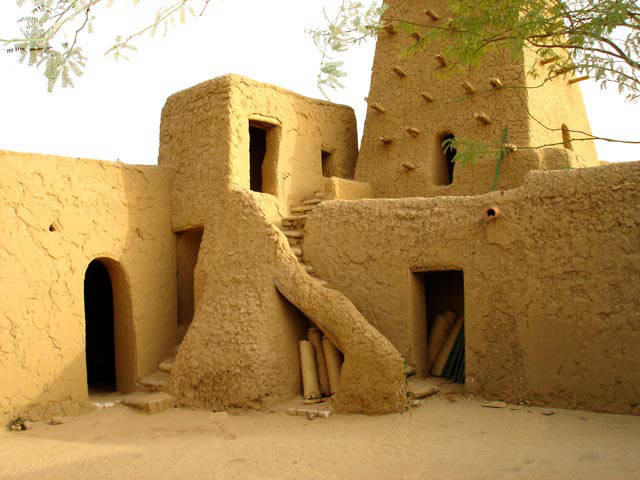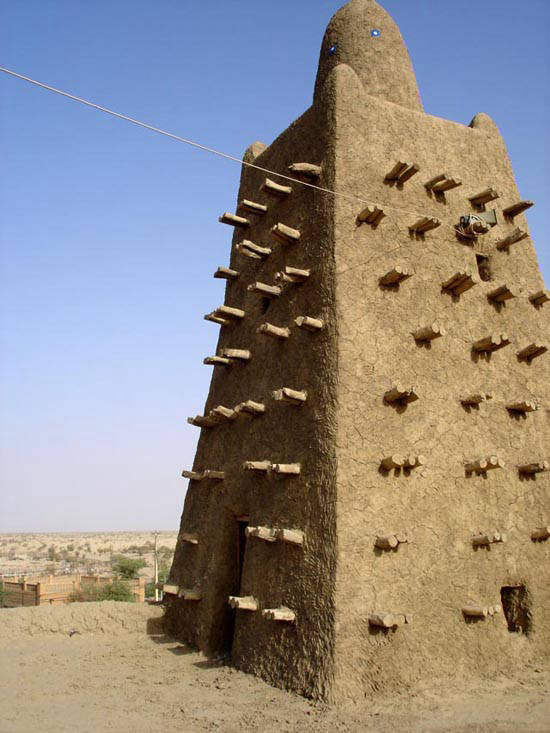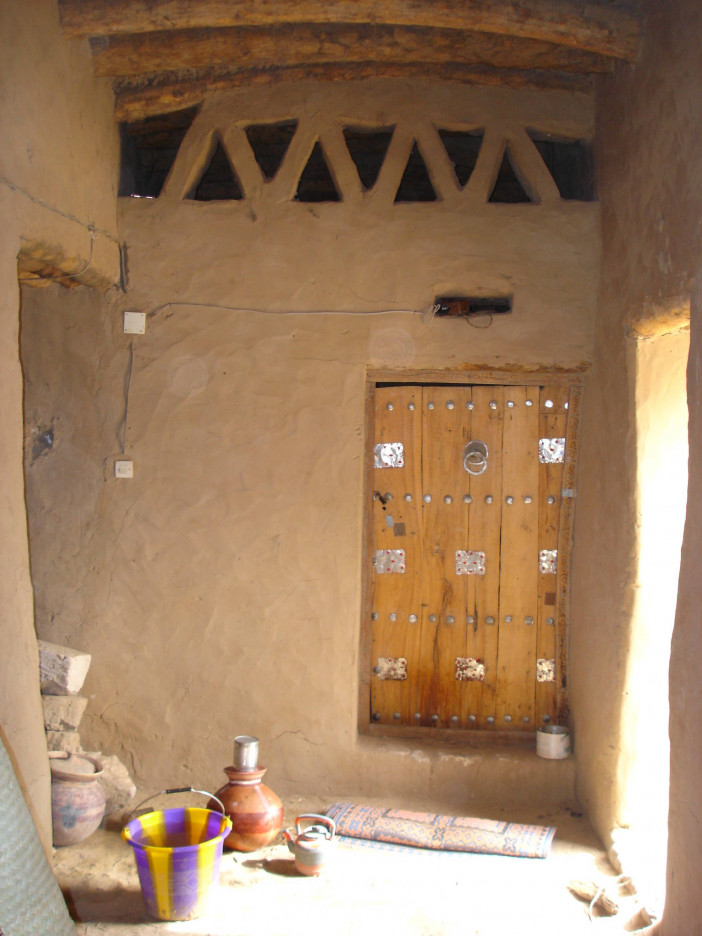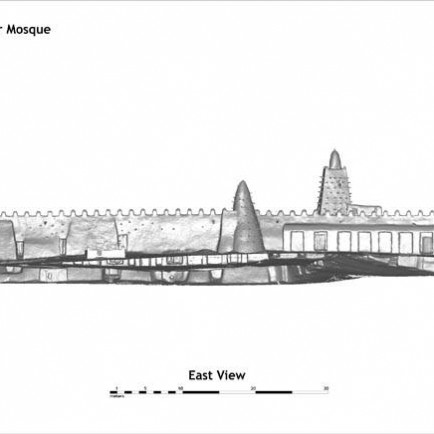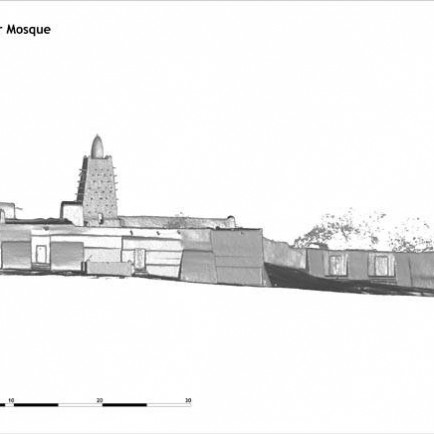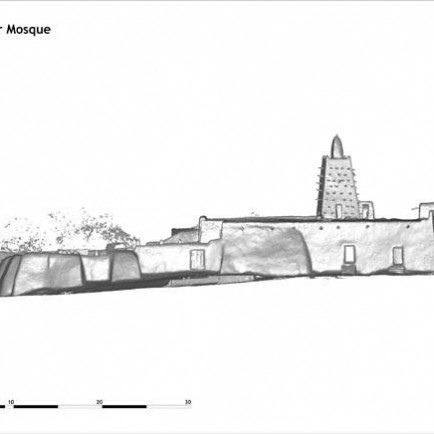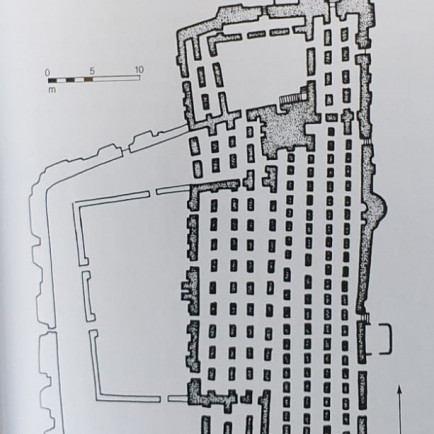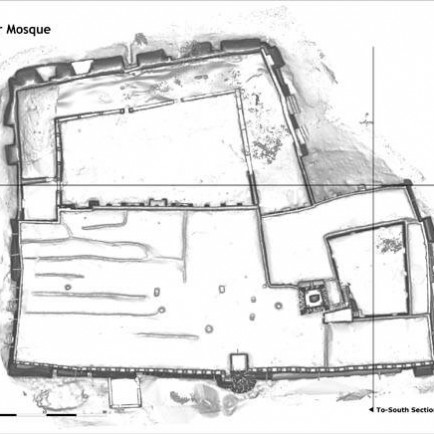The Djinguereber Mosque
History
The Great Djingareyber Mosque of Timbuktu (Mali) is one of the three great mosques of Timbuktu (Djingareyber, Sankoré and Sidi Yahia). It was built between 1325 and 1327 under the reign of the Emperor of Kankan Moussa then rebuilt and enlarged between 1570 and 1583 by Imam Al Aqib, Cadi of Timbuktu who then added the entire southern part and the surrounding wall. of the cemetery located to the west.
Partially destroyed in 2012, this building, listed on the UNESCO World Heritage List, was subsequently rebuilt.
Urban and Architectural
The foundations are made of stone. Otherwise the materials and construction methods are very similar to those at Djenné. Load-bearing elements are generally in mud brick with wooden tie-beams laid at intervals at the courses. Reinforcing layers of alhore stone have been added at various times to walls, buttresses, parapets and the minaret. Roofs are made of palm-tree joists crossed with branches and covered first with palm matting and then fine mud. The branches are left exposed in some parts of the ceiling and rendered in mud in others, probably reflecting different periods of maintenance work.
Description
Details
Location
Askia Mohamed Bvd, Timbuktu, Mali
Worshippers
12 000
Owners
Imam Al Aqib, Cadi of Timbuktu
Year of Build
1324-1325
Area
3000
Drawings
Map
History
The Great Djingareyber Mosque of Timbuktu (Mali) is one of the three great mosques of Timbuktu (Djingareyber, Sankoré and Sidi Yahia). It was built between 1325 and 1327 under the reign of the Emperor of Kankan Moussa then rebuilt and enlarged between 1570 and 1583 by Imam Al Aqib, Cadi of Timbuktu who then added the entire southern part and the surrounding wall. of the cemetery located to the west.
Partially destroyed in 2012, this building, listed on the UNESCO World Heritage List, was subsequently rebuilt.
Urban and Architectural
The foundations are made of stone. Otherwise the materials and construction methods are very similar to those at Djenné. Load-bearing elements are generally in mud brick with wooden tie-beams laid at intervals at the courses. Reinforcing layers of alhore stone have been added at various times to walls, buttresses, parapets and the minaret. Roofs are made of palm-tree joists crossed with branches and covered first with palm matting and then fine mud. The branches are left exposed in some parts of the ceiling and rendered in mud in others, probably reflecting different periods of maintenance work.
Description


